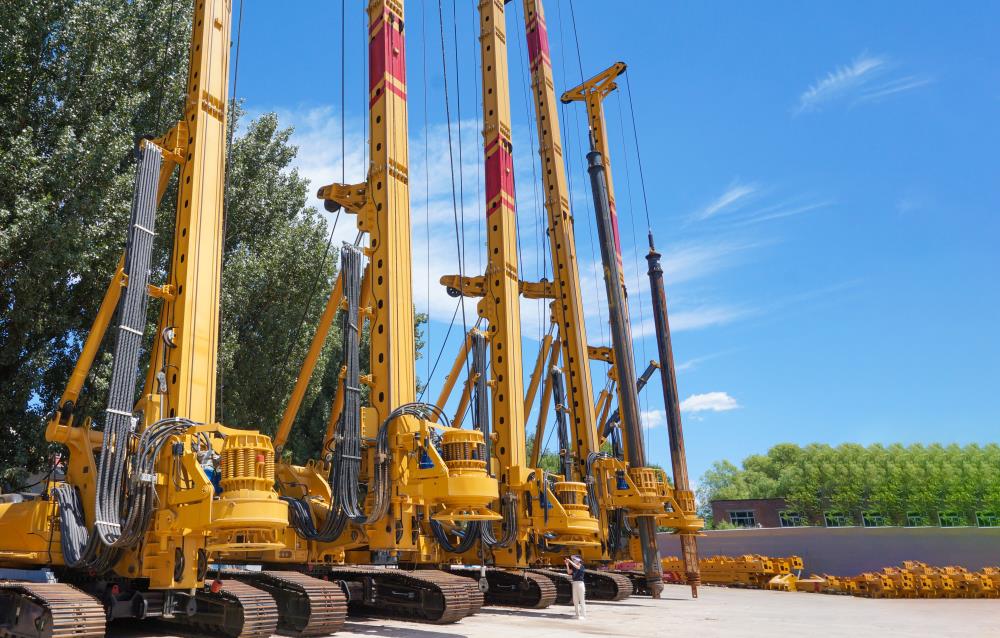Many operators of rotary drilling rigs have encountered the problem of the kelly bar slipping down during the construction process. In fact, this has nothing to do with the manufacturer, model, etc. It is a relatively common fault. After using the rotary drilling rig for a period of time, after returning the operating handle to the neutral position, the kelly bar will slide down a certain distance. We usually call this phenomenon the kelly bar sliding down. So how do we solve the problem of the kelly bar slipping down?
1. Inspection method
(1) Check the solenoid valve 2
Check whether the solenoid valve 2 is tightly closed: remove the two oil pipes leading to the solenoid valve 2 at the motor, and block the two oil ports on the motor end with two plugs respectively, and then operate the main winch mechanism. If it works normally, it indicates a fault From the solenoid valve 2 is not closed tightly; if it is still abnormal, it is necessary to check its components.
(2) Check the hydraulic lock
Check whether there is a problem with the hydraulic lock: first adjust the two lock cylinders, if it does not work, then remove the lock for careful inspection. If the reason cannot be found, the ready-made lock can be used for an installation test to find out the cause of the failure. Because the hydraulic lock of the auxiliary hoist is the same as that of the main hoist, the lock of the auxiliary hoist can also be borrowed and replaced one by one to identify the quality of the main hoist lock. If there is no problem with both locks, proceed to the next check.
(3) Check the brake signal oil
Check the speed of the brake signal oil supply and break: the current drilling rig, the flow of the signal oil can be adjusted, that is, the time when the main winch releases the brake can be adjusted. Therefore, for the two types of drilling rigs, the flow of signal oil can be adjusted through its regulating valve. If the working condition of the machine is still abnormal, it is necessary to check whether the oil pipe of the brake signal oil is blocked. If these inspection parts are normal, you can only continue to check
(4) Check the brake:
Check whether the brake piston moves smoothly in the working row, and repair or replace it according to the cause of the failure.
The kelly bar of the rotary drilling rig is basically fixed on the main hoisting drum through the wire rope, and the drill pipe can be lifted or lowered correspondingly when the drum or the wire rope is released. The power of the reel comes from the main hoist motor that has been decelerated many times. Its stop is realized by the brake directly installed on the decelerator. During the lifting or lowering of the kelly bar, if the operating handle is returned to the middle If the kelly bar cannot stop immediately and slide down a certain distance before stopping, there are basically three reasons for the following reasons:
1. Braking lag;
2. The two hydraulic locks at the outlet of the motor end fail, and the motor cannot stop rotating immediately under the action of the wire rope torque;
What we tend to ignore is the third reason. All rotary drilling rig have a kelly bar release function. This function is provided by the solenoid valve to release the brake signal oil, and then the solenoid valve is connected to the main engine through two oil pipes. The oil inlet and outlet of the hoist motor ensure that the small rotary drilling rig can always be in contact with the working ground and have a certain pressure during the drilling process. In other working conditions, the solenoid valve disconnects the two oil pipes leading to the oil inlet and oil outlet of the motor. If the disconnection is not timely, the above-mentioned fault phenomenon will occur.
Post time: Aug-23-2022


